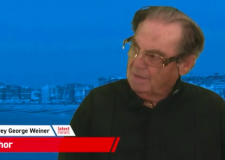Brighton Festival 2013: Theatre
The best in international & national theatre on your doorstep
MY LIFE AFTER
Buenos Aires-based writer and director Lola Arias speaks about the genesis of this uniquely personal response to the Argentina of her parents’ generation

How do you start to create a work like My Life After? And how do you choose the actors that you work with?
“When I started the research for the play, I had only the concept: a group of young people born during the Argentinean dictatorship reconstruct the life of their parents with the help of photos, documents, family films. With this idea, I started interviewing people. I chose these six performers because of their story. Carla is a daughter of a soldier of the ERP [Revolutionary Army of the People] who was killed in combat, Vanina is the daughter of a police man who worked under covered, Blas is a son of a man who was studying to be a priest, Mariano is the son of a journalist who was in the JP [Peronist Youth] and disappeared, Pablo is the son of a man who worked in a municipal bank under the control of the army, Liza is the daughter of intellectuals who went into exile in México. I wanted to have people with different backgrounds, people whose parents were in the guerrilla or in the police or were indifferent to politics.”
You say that My life After operates around the borders of fiction and reality, are you making fiction of reality or a reality from fiction?
“My Life After is documentary theatre. A theatre play based on real stories and also represented by the protagonist of those stories. This genre is very common in film but in theatre there is not such a long tradition in this kind of performance. In My Life After, there is fiction because there is fiction every time someone tells a story. The performers are telling their own family stories and they are reconstructing, imagining the past. There are many scenes from the piece in which the performers make a re-enactment of a scene in the life of their parents, taking the role of them. The performers are like stunt doubles of their parents, willing to act the most dangerous scenes in their lives.”
How do different international audiences react to the piece?
“In a European context, the audience is always very surprised about the stories of the perfomers. They can’t believe what they went through. In some countries, they were waiting for the performers after the show to ask them – ‘Did this really happen to you?
When we perform in Latinoamérica the audience is not so affected by the stories because they know them, they had similar experiences but there are more affected by the way in which we tell the stories. They are surprised about the use of documents, video, the reconstruction of tragic scenes in a very dry way, with distance and sometimes humor.”
Do you see differences in what people find sad and what people find amusing?
“In general some audiences feel shy to laugh because they feel disrespectful, they think that the story is too tragic. But in fact, we laugh about our own tragedies. I think humour is a great tool to make someone reflect on something in a new way.”
Is the work a focused comment on life and society in Argentina or does it travel beyond and have relevance on a global scale?
“This piece is a about Argentinean History but it’s also the story of how life is under a dictatorship, any dictatorship. It’s very interesting to perform this piece in different political contexts because the audience relate the piece to the history of their own country and the piece gets a new relevance for them.”
The work was created in 2009, do you have to return to the work and revise it with the passing of time?
“The piece is re-written because life is re-written all the time. The piece is like a living creature that is growing with the years. In 2009, in the opening of the piece, Vanina was reading a trial against her father –a policeman undercover – because of appropriation. Her father stole a baby from a detention and torture camp called ESMA and pretended that it was his son. Vanina was not able to testify against her father in the trail because a daughter can’t declare against her father. After the play, the lawyers presented a demand asking for the possibility of Vanina to declare, saying that she was making her testimony in the play. The judges accepted the demands and she finally declared, thanks to the play. Two years ago the father was condemned to 18 years in prison. Four years after the opening, her text changed a lot because she has to tell this entire story.”
As an artist you employ a variety of media and different disciplines; music, theatre, literature and art amongst them, how do you decide what to use and when?
“Yes, I sometimes do plays, installations, concerts, albums, books. I also work with many different artists from different fields. I am part of a generation of artists who don’t see themselves as writers or theatre directors or musicians but just artists. When I have an idea it’s not always clear in which format it will develop. For Mucamas [Hotel maids], a project based on the life of the hotel maids I decided to make an installation in a real hotel because I wanted the audience to be alone in a hotel room listening to the story of a cleaner through video, sound, or live performance. I wanted this lonely experience in the real space.
For Los que no duermen [The sleepless], a project made with the musician Ulises Conti, based on stories about people that live in the night, I decided to develop a music album with texts and songs. In My Life After I wanted to make it as a live performance because all the play is about bringing the past to the present. And that’s what theatre does. But sometimes the project starts like a book and ends in a play, or starts as a play and becomes an album. I’m more interested in following ideas and then I discover where they go.”
Is each performance identical or can the work take on differences as it unfolds with each performance?
“There are unpredictable things in the play. There is a kind of fortune-teller in the form of a real tortoise – deciding the future of Argentina. The actors ask the tortoise if there will be a revolution in Argentina. The tortoise is standing in the middle of a yes and a no written in the floor and sometimes she walks to the yes and sometimes to the no.”
My Life After, Fri 24 – Sun 26 May
Fri 8pm, Sat & Sun 7pm
Corn Exchange, Brighton Dome




















